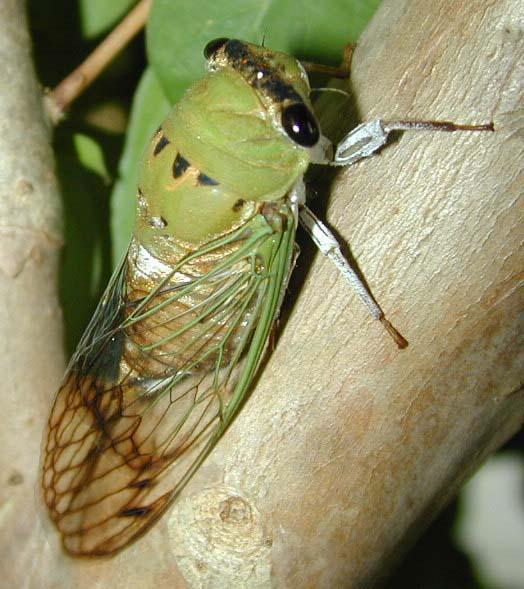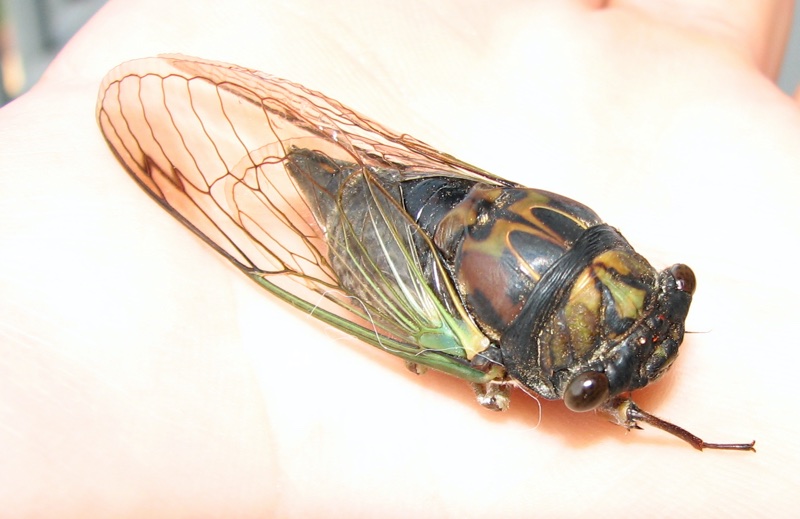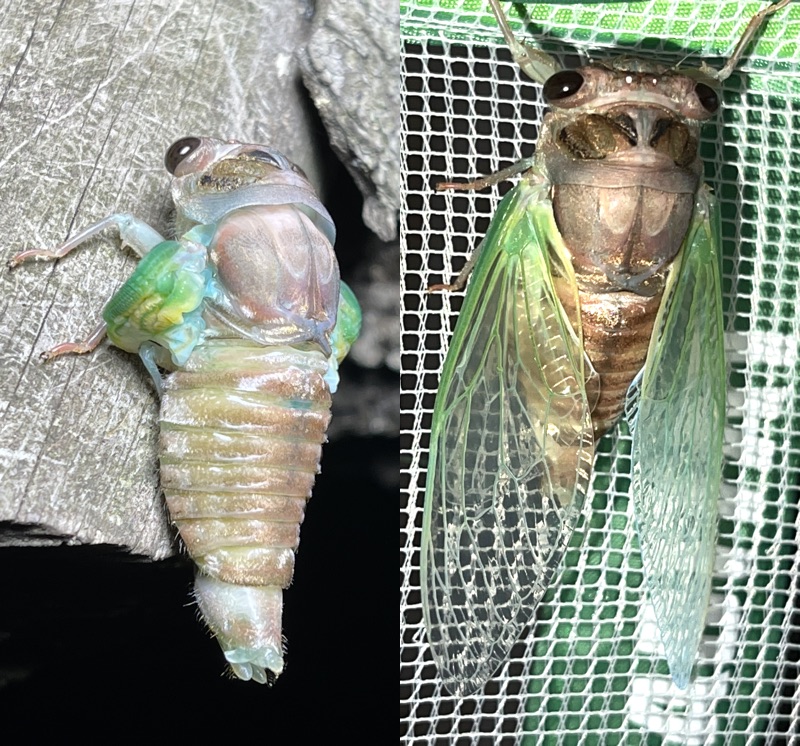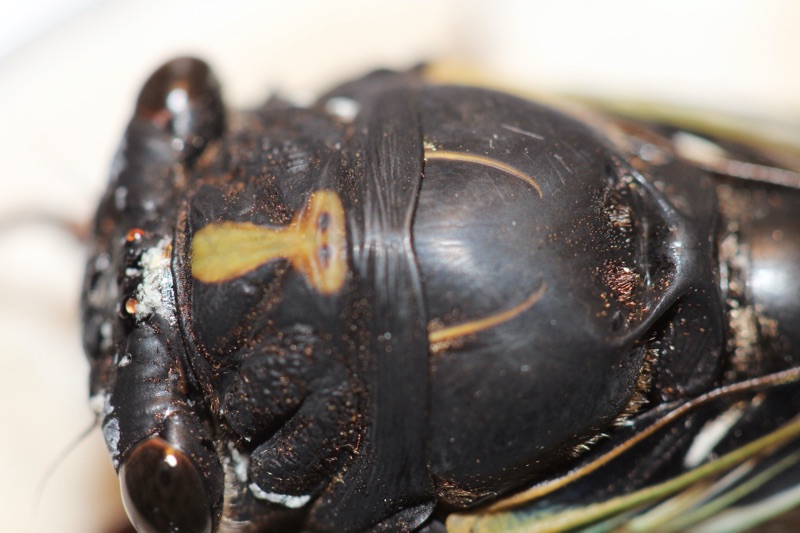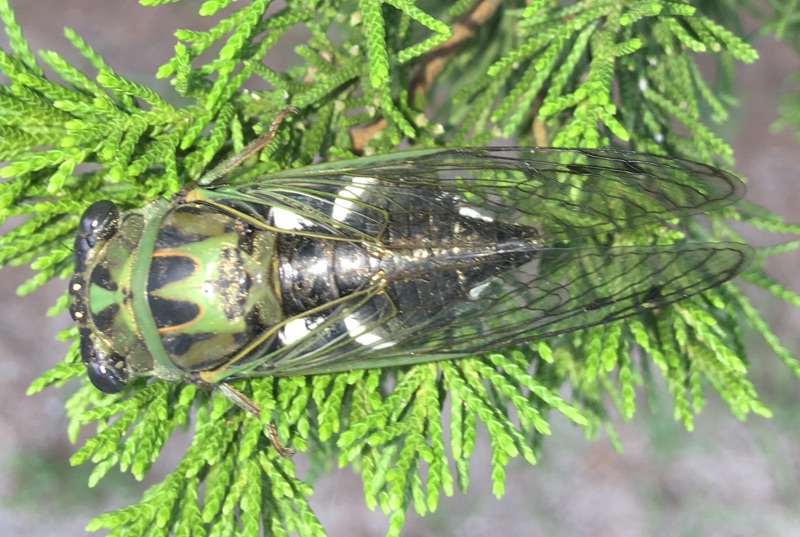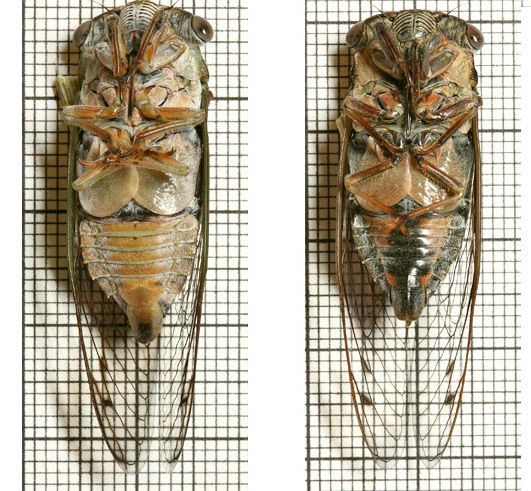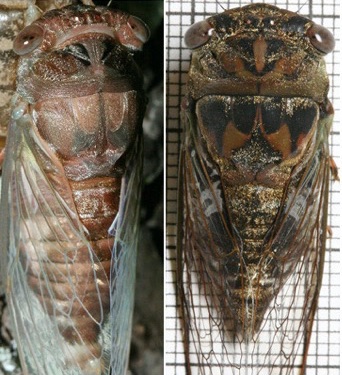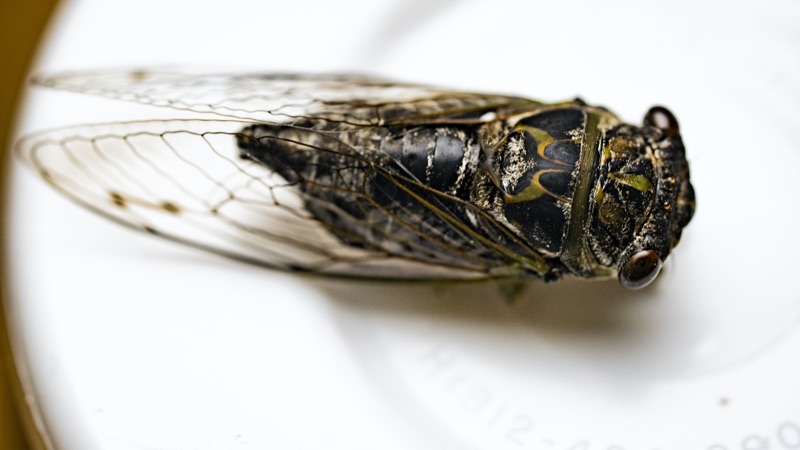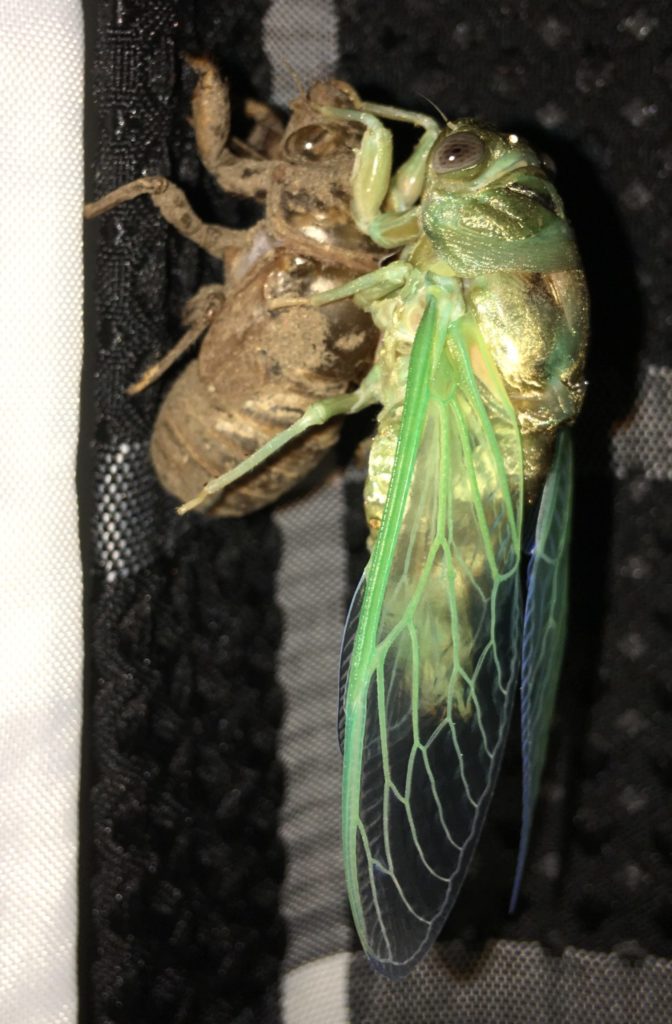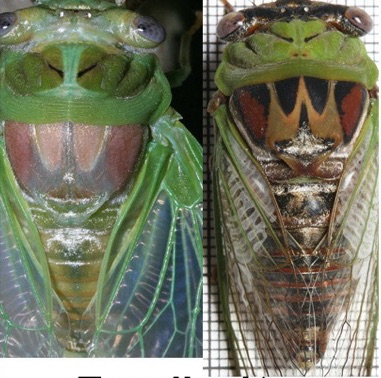Neotibicen linnei (Smith and Grossbeck, 1907) aka Linne’s Cicada.
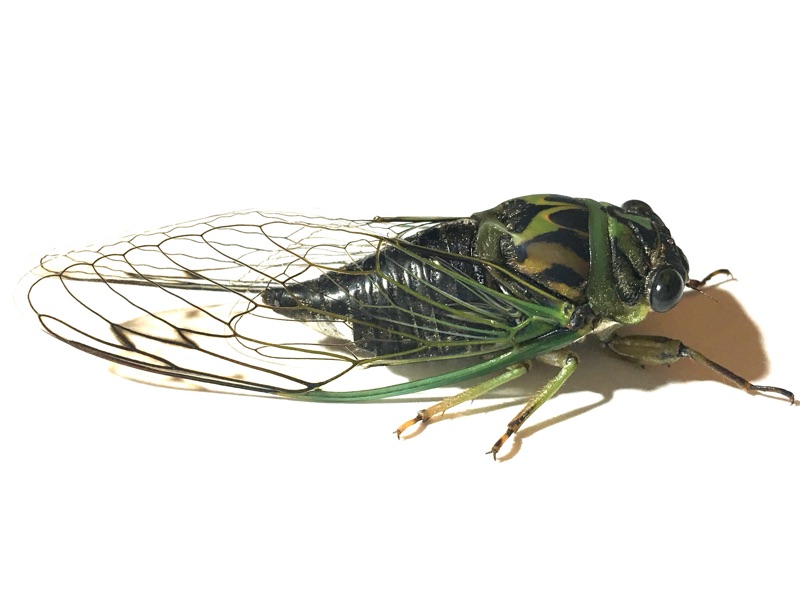
Photo by Dan Mozgai.
See all Neotibicen linnei images & information about cicadamania.com.
Song type: Call
Source: ©Insect Singers
Video Playlist
Playlists contain multiple videos found on YouTube.
Name, Location and Description
- Cicada Name: Neotibicen linnei (Smith and Grossbeck, 1907)
- Short Name: N. linnei
- Common Name: Linne’s Cicada
- Synonym/Former Name: Tibicen linnei
- When: July-September. Peak in August.
- Where it is found: AL, AR, CT, DE, DC, FL, GA, IL, IN, IA, KS, KY, LA, ME, MD, MA, MI, MN, MS, MO, NE, NJ, NY, NC, OH, ON, PA, SC, TN, VT, VA, WV, WI
- Maps: Biogeography of the Cicadas (Hemiptera: Cicadidae) of North America, North of Mexico [PDF]
- Description: Black, green and some brown camo pattern. Prominent M. Bend in its wing. Sounds like N. tibicen.
- Eye Color: dark brown
- Pronotal Collar Color: green
- Identification: Bug Guide
- Identification: iNaturalist
- Subject Matter Expert website: Cicada Central
- Taxonomic Information: Integrated Taxonomic Information System
- Song: Insect Singers
A description of linnei by Wm. T. Davis from Mississippi Cicadas, with a Key to the Species of the Southeastern United States1
The female of this species often closely resembles that of T. pruinosa [Neotibicen pruinosus], but in linnei the fore wings are abruptly bent near the middle, whereas in pruinosa the curve is more regular. The song is very different from that of pruinosa and is a continuous z-ing, but generally of short duration.
Identification Key by Wm. T. Davis:1
A. Large, heavy bodied species ; head broad, uncus simple, and first cross vein in the fore wings starting from radius 3 far back, or about one third distant from base of first marginal cell.
B. Uncus longer than broad. Black species with green or greenish markings and black area on the central part of the abdomen beneath
C. Hind margin of pronotum or collar, green or greenish.
A longitudinal band of black on the under side of the abdomen, the opercula more lobate, and the margin of the front wings suddenly bent near the middle.
Example of the wing bend:

What this cicada looks like when it is still soft
Color varies, even from the same location:

Classification:
Family: Cicadidae
Subfamily: Cicadinae
Tribe: Cryptotympanini
Subtribe: Cryptotympanina
Genus: Neotibicen
Species: Neotibicen linnei (Smith & Grossbeck, 1907)
List of sources
- Davis, W.T. 1918. Mississippi Cicadas, with a Key to the Species of the Southeastern United States. Journal of The New York Entomological Society. Vol. XXVI. Read on archive.org.
- Full Binomial Names: ITIS.gov
- Common names: BugGuide.net; The Songs of Insects by Lang Elliott and Wil Herschberger; personal memory.
- Locations: Biogeography of the Cicadas (Hemiptera: Cicadidae) of North America, North of Mexico by Allen F. Sanborn and Polly K. Phillips.
- Descriptions, Colors: personal observations from specimens or photos from many sources. Descriptions are not perfect, but may be helpful.
Notes:
- Some descriptions are based on aged specimens which have lost some or a lot of their color.
